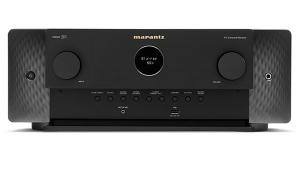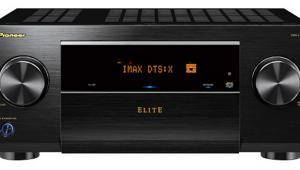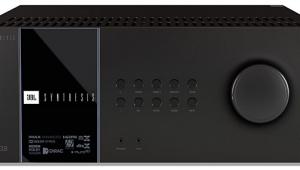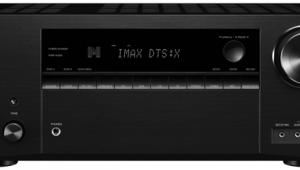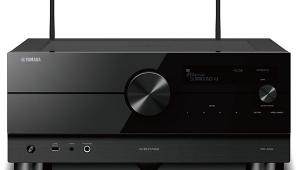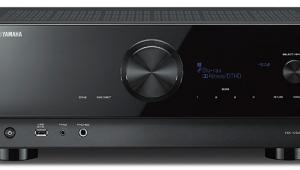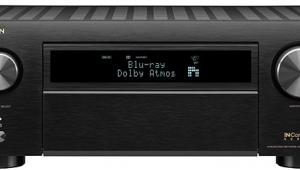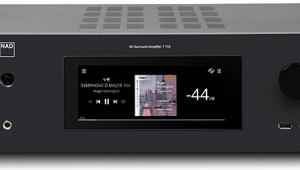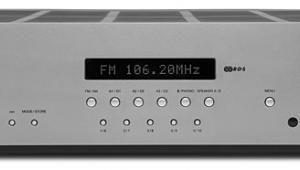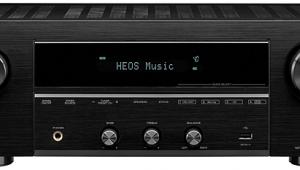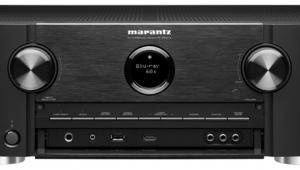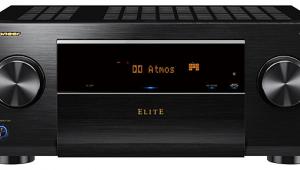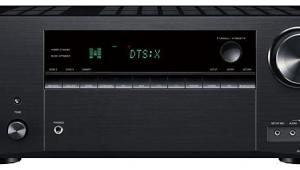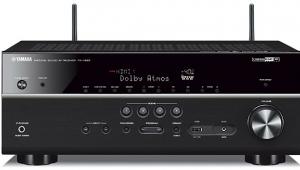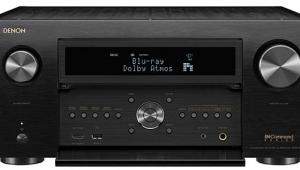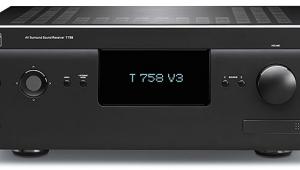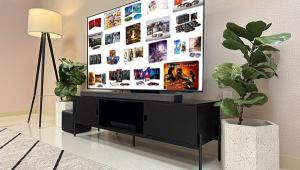Test Report: Sony STR-DN1030 A/V Receiver Page 4
Measurements
DOLBY DIGITAL PERFORMANCE
All data were obtained from various test DVDs using 16-bit dithered test signals, which set limits on measured distortion and noise performance. Reference input level is –20 dBFS, and reference output is 1 watt into 8 ohms. Volume setting for reference level was 47. All level trims at zero; except for subwoofer-related tests, all speakers were set to "large," subwoofer On. All are worst-case figures where applicable.
Output at clipping (1 kHz into 8/4 ohms)
1 channel driven: 142/221 W (21.5/23.4 dBW)
5 channels driven (8 ohms): 94 W (19.7 dBW)
7 channels driven (8 ohms): 80 W (19 dBW)
Distortion at 1 watt (THD+N, 1 kHz)
8/4 ohms: 0.02/0.03%
Noise level (A-wtd): –74.3 dB
Excess noise (with sine tone)
16-bit (EN16): 0.4 dB
Frequency response: 20 Hz to 20 kHz +0, –0.5 dB
STEREO PERFORMANCE, ANALOG INPUT(Video 1)
Reference input and output level is 200 mV; volume setting for reference output level was 49.
Distortion (THD+N, 1 kHz, 8 ohms): 0.02%
Noise level (A-wtd): –91.3
Frequency response: <10 Hz to 200 kHz +0, –2.5 dB
STEREO PERFORMANCE, DIGITAL INPUT
Reference level is –20 dBFS; all level trims at zero. Volume setting for reference level was -47.
Output at clipping (1 kHz, 8/4 ohms, both channels driven): 124/155 W (20.9/21.9dBW)
Distortion at reference level: 0.02%
Linearity error (at –90 dBFS): -0.3 dB
Noise level (A-wtd): –74.6 dB
with 96-kHz/24-bit signals: –82.8 dB
Excess noise (with/without sine tone)
16-bit (EN16): 1.75/0.8 dB
quasi-20-bit (EN20): 15.2/14.9 dB
Noise modulation: 0.25 dB
Frequency response: <10 Hz to 20 kHz +0, –0.5 dB
with 96-kHz/24-bit signals: +0, -3 dB at 43.1 kHz
BASS-MANAGEMENT PERFORMANCE
Measured results obtained with Dolby Digital test signals.
Subwoofer-output frequency response (crossover set to 80 Hz): 12 dB/octave above -3-dB rolloff point of 80 Hz
High-pass-filter frequency response (crossover set to 80 Hz): 6 dB/octave below -3-dB rolloff point of 80 Hz
Maximum unclipped subwoofer output (trim at 0): 2.6v
Subwoofer distortion (from 6-channel, 30-Hz, 0-dBFS signal; subwoofer trim set to 0): 1.5% (0.1% when trimmed -1 dB.)
Crossover consistency: bass crossover frequency and slope were consistent for all sources and formats.
Speaker size selection: all channels can be set to "small"
Speaker-distance compensation: available for all main channels.
Sony's new midrange model yielded consistently excellent test-bench numbers. I was gobsmacked by the very lightweight DN1030's power output, which was strong in all modes and remained greater than 80 watts even with all 7 channels driven. (Presumably, Sony is using a variant of Class D, or some other efficient amplifier topology, though the marketing materials I've seen are uniformly mute on the subject.) D/A linearity, noise, and distortion tests were superb throughout, with only the analog and 96/24 tests, which were merely very good, suggesting any limitations, probably somewhere in the receiver's analog circuitry.
My only other points concern the Sony's subwoofer crossovers and output level. The latter clipped at a paltry 2.5 volts; this is much lower than most receivers, but still ample to drive any subwoofer I know to full output, and is thus a nonissue. (Technically, the DN1030's sub output clipped at reference settings, but since no one will ever hear this, and since dialing in a 1-dB cushion on the receiver's sub-trim setup menu eliminated this, I'm inclined to give Sony a pass here.) Secondly, Sony persists in designing its gear with 6 dB/12 dB- (hi/lo-pass) per-octave crossovers, and calculating -3-dB points for both "halves," a distinct departure from the norm and de facto (THX) standards of 12/24 dB/octave, and -3- and -6-dB inflection points. I'm sure they have their reasons, and users (like me and most everyone I know) who ultimately tune sub/sat/room interactions by ear anyway will rarely become aware of this, but it may puzzle experienced home theater pros and amateurs alike when crossover points set to 80 Hz sound rather more like 120 Hz. Nevertheless, the STR-DN1030's impressive technical performance suggests that, audio engineering-wise at least, there's life in the old girl yet. - D.K.
Bottom Line
I have no complaints with the Sony STR-DN1030 A/V receiver's actual audio performance: It was solid and enjoyable from soup to nuts. On the usability side, however, this new Sony falls a bit short. Its onscreen display implementation is my primary com- plaint, but while the DN1030 can only be described as full-featured, the choice of its features is in places questionable.
Onboard Wi-Fi, AirPlay, and, to a lesser degree, Bluetooth are doubtless strong selling points today. But the Sony's sluggish onscreen menu and the absence of graphic overlay displays might be more important issues to certain A/V folk, and those features are not really retrofittable. Performance-wise, however, Sony's STR-DN1030 is in step with the current A/V receiver competition, and its feature-per-dollar count is certainly competitive.
